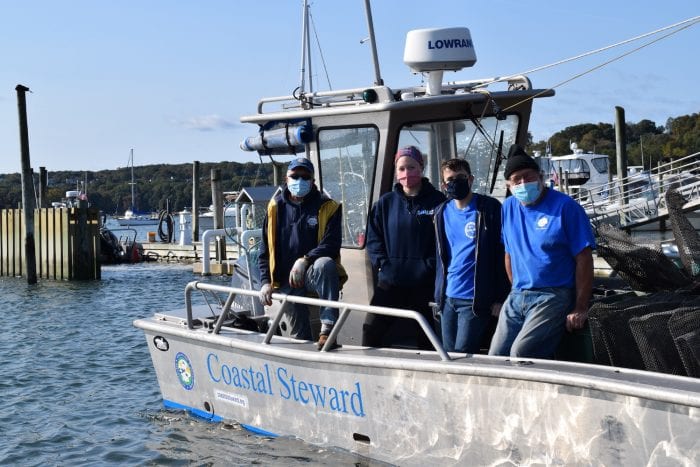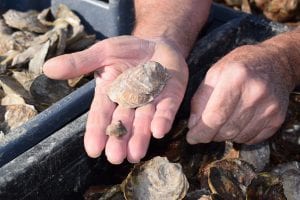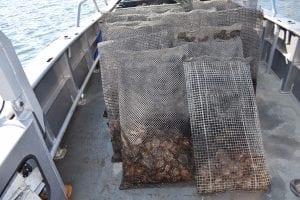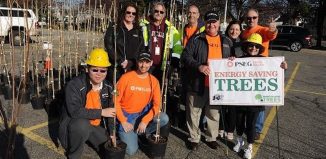Volunteers Plant 400,000 Oysters in Port Jefferson Harbor

Not only are they delicious, but they’re good for the environment, too.
On Sunday Oct. 18, several volunteers from Coastal Steward Long Island who work at the Mount Sinai Marine Environmental Stewardship Center planted 400,000 oysters in and around the harbor.

“Fifteen years ago, there were no oysters in Port Jefferson Harbor,” said Bruce Folz, CSLI director of shellfish restoration. “When my kids were little, we were walking down the beach and they were picking up oyster shells, but there were no live ones. … We want to change that.”
According to Town of Brookhaven Supervisor Ed Romaine (R), Long Island used to be a saturated with shellfish.
“There was a time 50 years ago when you could just walk down the beach and grab oysters or clams,” he said.
But because of poachers and pollution, clams and oysters that once covered the sands have become difficult to find.
Every year, in a collaborative effort with local groups and the town, shellfish are grown in netted cages with the expectation to plant them back in the local waters, north to south, including Mount Sinai Harbor and Bellport Bay. Back in August, the town announced the supply of 50,000 seed clams for planting in the South Shore. Earlier this year, the town finished several upgrades to the Mount Sinai mariculture facility, thanks to a $400,000 state grant.
“We make sure the seeds are distributed to other groups to plant and spread them out,” Romaine said.
CSLI originally got started restoring the shellfish population back in 2000, and now it has a steady group of volunteers who come to the mariculture facility in Mount Sinai Harbor every two weeks, May through October, to maintain both the facilities and the seed beds. As they have done every year, volunteers come down to the harbor early in the morning to head out by boat and drop the oysters into the water with hopes they survive and thrive.
“We put them in cages and bags, or as I like to call them ‘condos,’ then every couple of weeks we check up on them,” Folz said. “They have an 80-to-90% survival rate in the cages, but only 10 or 15 while in nature.”
By planting the shellfish, they won’t only be harvested for commercial use, but will help clean up the water as a natural ocean vacuum. The shellfish program is becoming ever more important for water quality, as locations as close as Stony Brook Harbor have experienced hypoxia, or a lack of oxygen in water, just this year, according to the annual Long Island Water Quality Impairments report. Shellfish such as oysters and clams are great for filtering out organic particulates.

“Adult oysters can filter up to 50 gallons of water a day,” Folz said. “We’ve talked to a couple of baymen and I’ve gotten the feeling it’s become a viable product — it’s increasing the oyster count.”
Councilwoman Jane Bonner (R) said that organizations like the Coastal Steward have played an important role in bringing shellfish back to local waters.
“The Town of Brookhaven has beautiful and bountiful waterways that are so much a part our economy, community and the environment,” she said. “We must do everything we can to take good care of these natural assets, so generations to come will benefit by our actions to preserve and protect them.”
Since the planting program began, well more than one million shellfish have been planted in Port Jefferson and Mount Sinai harbors, helping the ecosystem and cleaning things up.
“We’re not giving up, we believe in our environment and that’s crucial,” Romaine said






